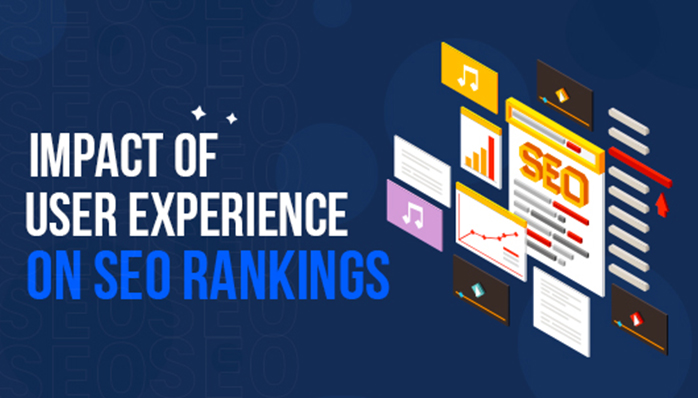
What is the impact of user experience (UX) on SEO rankings?
In the dynamic realm of digital marketing, two buzzwords often dominate the conversation: User Experience (UX) and Search Engine Optimization (SEO). Both disciplines are crucial to the success of any online business, but they are not just parallel tracks aimed at enhancing website performance; they are deeply intertwined. UX focuses on the overall feel, intuitiveness, and satisfaction that users encounter when they visit a website, while SEO is the art and science of ensuring that the site is visible and ranks high on search engine results pages. But what is the tangible impact of UX on SEO rankings?
As search engines evolve, the algorithms that dictate rankings become increasingly sophisticated, placing user-centric metrics at the forefront of SEO strategies. This shift signifies a profound recognition: the experience of the user is paramount. The implication is clear—UX has become a cornerstone of SEO. Websites crafted with the user in mind tend to engage visitors, compel them to explore, and encourage them to return, which search engines interpret as indicators of quality and relevance.
What is UX (User Experience)?
User Experience (UX) refers to a person's overall experience when interacting with a product, system, or service. It encompasses every aspect of the end-user's interaction with the company, its services, and its products. The primary goal of UX is to create easy, efficient, satisfying, and all-around pleasant experiences for the user. Here are some key components that constitute UX:
-
Usability: How easy and intuitive it is for new users to navigate a product or website and how efficiently they can accomplish their intended tasks.
-
Design: The aesthetic and functional elements of a user interface, which include layout, visual design, text, brand, sound, and interaction elements.
-
Accessibility: Ensuring the product or service is usable by people of all abilities and disabilities.
-
Desirability: The emotional responses evoked in the user, often tied to the design elements that create an attractive and pleasing experience.
-
Value: The extent to which the user finds the product or service beneficial and worth their time and money.
-
Credibility: How trustworthy and believable users find the product or service.
-
User Research: Understanding the needs, wants, and behaviors of users through various research methods, allowing for a design that is tailored to the target audience.
-
Interaction Design: Designing the interactive aspects of a product, ensuring that users can achieve their goals in the best way possible.
-
Information Architecture: The structuring, organizing, and labeling of content in an effective and sustainable way, so that users find information and complete tasks easily.
-
Content Strategy: Planning, development, and management of content—written or in other media.
UX is not just about making a website look good—it's about feeling good to the user; it’s about how easily a new visitor can navigate your site, how quickly they find what they're looking for, and how they feel during and after the process. UX is a continuously evolving discipline that takes into account the ever-changing preferences and behaviors of users, as well as the introduction of new technologies and interaction paradigms.
Why is UI/UX important for SEO?
User Interface (UI) and User Experience (UX) play a crucial role in Search Engine Optimization (SEO) for several compelling reasons. SEO isn't solely about keywords and backlinks anymore; it's also about delivering a seamless and positive experience to users. Here's why UI/UX are important for SEO:
-
User Engagement Metrics: Search engines use user engagement metrics like dwell time, bounce rates, and click-through rates as indicators of a website’s quality. A good UI/UX keeps users engaged, lowers bounce rates, and signals search engines that the website is valuable and should rank higher.
-
Mobile Optimization: With mobile devices accounting for a significant portion of internet traffic, a mobile-friendly UI/UX is essential. Google uses mobile-first indexing, meaning it predominantly uses the mobile version of the content for indexing and ranking.
-
Page Load Speed: A core component of UX is the speed at which pages load. Slow-loading websites lead to poor user experiences and higher bounce rates. Search engines penalize slow websites by lowering their rankings.
-
High-Quality, Relevant Content: A part of UX is providing valuable content that meets users’ needs and answers their questions. Well-organized and relevant content increases dwell time and can lead to higher rankings.
-
Intuitive Navigation and Site Structure: An intuitive UI that allows users to easily find information not only improves UX but also helps search engine crawlers better index the website, understanding the site structure and content hierarchy.
-
Reduced Bounce Rates: A great UI/UX keeps visitors on the site longer. When users quickly leave after arriving, it suggests to search engines that the content might not be relevant, which can negatively impact rankings.
-
Brand Perception and Trust: Professional and user-friendly design enhances brand perception. A positive UX can lead to trust, and a trusted website is often rewarded with higher rankings by search engines.
-
Click-Through Rate (CTR): A compelling UI with clear and enticing call-to-action (CTA) buttons can improve the CTR from the search engine results pages (SERPs) to your website. A higher CTR can indirectly affect your SEO by showing search engines that your page is relevant to users’ queries.
-
Voice Search Optimization: With the rise of voice search, UX plays a role in delivering content in a conversational manner that matches voice search queries, improving accessibility and SEO.
-
Semantic HTML and Accessibility: Proper use of HTML tags enhances both UX and SEO by providing a clear structure for content that's accessible for all users, including those using screen readers.
By improving the UI/UX, you are effectively ensuring that both users and search engines can access, interpret, and value your content easily, which is at the heart of modern SEO practices. Good UI/UX design is no longer just a ‘nice to have’ – it’s a fundamental component that complements and enhances your SEO efforts.
How UX impacts SEO
User Experience (UX) has a multifaceted impact on Search Engine Optimization (SEO) because it directly influences several factors that search engines consider when determining rankings. Here’s an overview of how UX impacts SEO:
-
User Engagement Metrics: Positive UX can lead to increased time on site, lower bounce rates, and more pages visited per session. These metrics inform search engines that users find the content on the site valuable and engaging, which can positively influence rankings.
-
Mobile Experience: As mobile browsing surpasses desktop, UX on mobile devices is crucial. Mobile-friendly and responsive Web design ensures that sites perform well on all devices, which is a factor in Google's ranking algorithm.
-
Page Load Speed: Part of UX is minimizing wait times for users. Search engines, like Google, include page load speed as a ranking factor because faster pages create a better experience.
-
Content Readability and Layout: Content that is easy to read and engaging leads to a better user experience. Well-structured content with clear headings and subheadings helps users and search engines understand the context better, potentially improving rankings.
-
Click-Through Rates (CTR): An enticing and clear meta description and title can improve the UX of search results, leading to higher CTR. Search engines can interpret high CTR as a sign that a webpage offers value to users, possibly boosting its ranking.
-
Intuitive Navigation and Architecture: A website that is easy to navigate and logically structured improves UX and helps search engine crawlers index the site more effectively, which can improve SEO.
-
Secure and Accessible Websites: Ensuring a website is secure (using HTTPS) and accessible to users with disabilities not only improves UX but is also factored into search engine rankings.
-
Interaction Design: With the integration of Core Web Vitals into Google's ranking factors, elements like how quickly pages become interactive (First Input Delay) impact SEO. These elements are part of creating a smooth interactive experience.
-
Visual Stability: Users expect pages to load without unexpected layout shifts, which can be frustrating and lead to a poor UX. The Cumulative Layout Shift (CLS) metric is a part of Core Web Vitals that affects rankings.
-
Bounce Rate and Pogo-Sticking: If users frequently return to search results after visiting a website (pogo-sticking), it can signal to search engines that the site might not be the most relevant or satisfying result, which could negatively impact rankings.
-
Behavioral Patterns: UX influences how users interact with a site, which in turn shapes behavioral patterns. Search engines analyze these patterns to understand if users find the content helpful, using this data as a factor in ranking decisions.
-
Brand Interaction: A strong UX can lead to better brand recognition and loyalty. As users become advocates for a brand, they are more likely to link to it and share its content, which can help improve SEO through increased backlinks and social signals.
In summary, UX directly and indirectly affects a wide array of factors that search engines consider when ranking websites. An excellent user experience is not just about serving users but also about signaling to search engines that your site is of high quality, relevant, and deserves a prominent ranking. By investing in UX, you can improve your SEO performance, driving more organic traffic to your site.
The Relationship Between UX and SEO
Welcome to "The Relationship Between UX and SEO," where we delve deep into the symbiotic dynamics of User Experience (UX) and Search Engine Optimization (SEO). Our platform is dedicated to uncovering and elucidating the intricate ways in which the art of designing for the user intersects with the science of ranking on search engines. Our mission is to empower businesses and webmasters by providing insights, analysis, and real-world examples that illuminate the critical importance of aligning UX with SEO strategies.
- How UX Directly Influences SEO: Here, we examine the cause-and-effect relationship between UX design choices and search engine rankings. From site architecture to page speed, we explore how optimized user experiences contribute to the SEO performance of a website. We believe that a website crafted with the user in mind is a website that is also optimized for search engines.
- The Role of User Engagement Metrics in Search Rankings: In this section, we break down the user engagement metrics that search engines like Google use as indicators of a website's value. We discuss how metrics such as bounce rate, dwell time, and click-through rates can reflect the quality of UX and influence a site's visibility in search results. Our analysis aims to demonstrate why an engaging UX is not just about aesthetics but is a critical component in driving organic search success.
- Case Studies Highlighting the UX and SEO Connection: Nothing speaks louder than success stories. Our collection of case studies provides concrete examples of how improvements in UX have led to significant SEO gains for companies. These real-life scenarios serve as a testament to the potent combination of user-centric design and SEO best practices. By analyzing these case studies, we offer practical insights and inspiration that our audience can apply to their own digital properties.
In our journey through "The Relationship Between UX and SEO," we commit to offering cutting-edge content that fosters an understanding of how better UX leads to better SEO. Whether you're a seasoned SEO professional, a passionate UX designer, or a business owner looking to improve your online presence, we're here to guide you through the complexities of creating websites that both users and search engines love.
Measuring the Impact of UX on SEO
Welcome to "Measuring the Impact of UX on SEO," your navigator through the world of user experience metrics and their influence on search engine rankings. We are a dedicated team of UX designers, SEO specialists, and data analysts who believe in the power of data-driven decisions to enhance online experiences. Our goal is to equip our readers with the knowledge and tools necessary to quantify the often-intangible aspects of UX and reveal their tangible effects on SEO.
- Tools for Tracking UX and SEO Metrics: We recognize that the first step in understanding the impact of UX on SEO is to capture the right data. Our platform provides comprehensive guides on the latest and most effective tools for tracking UX and SEO metrics. From Google Analytics to advanced UX recording software, we cover a spectrum of instruments that can help you measure everything from page load times to user interactions. Our content is crafted to help you navigate these tools, enabling you to glean actionable insights from the vast sea of data.
- Interpreting Data to Understand User Behavior: Data alone is not enough; interpretation is key. We focus on not just the 'what' and 'how' of user behavior metrics but also the 'why.' Our resources help you read between the lines of data, understand the story it tells about user behavior, and how this impacts SEO. We aim to demystify data analysis, making it accessible and actionable for businesses of all sizes. By understanding user behavior through data, you can make informed decisions to enhance both UX and SEO.
- A/B Testing for UX Improvements and SEO Gains: A/B testing stands as the cornerstone of our approach to marrying UX with SEO. Through our in-depth tutorials, case studies, and expert interviews, we demonstrate how to effectively run A/B tests to refine user experience and, in turn, improve SEO performance. We advocate for a culture of experimentation, where each test brings a new opportunity to fine-tune elements of your website and iterate towards perfection.
Our commitment at "Measuring the Impact of UX on SEO" is to be your ally in uncovering how even the smallest UX enhancements can lead to significant SEO benefits. We provide a space for professionals and enthusiasts to learn, share, and grow in the fields of UX and SEO. Whether you are just starting out or looking to refine your expertise, we're here to guide you in measuring and maximizing the impact of UX on SEO.
Future Trends in UX and SEO Integration
- "Future Trends in UX and SEO Integration" is an avant-garde platform at the intersection of user experience design and search engine optimization. Our vision is to illuminate the path ahead for digital professionals by exploring, analyzing, and forecasting the evolving relationship between UX and SEO. We are a collective of forward-thinkers: UX innovators, SEO strategists, and technology enthusiasts dedicated to tracking and interpreting the technological advancements that shape how users interact with the web and how search engines rank content.
- Artificial Intelligence and Machine Learning in UX and SEO: In this realm, we delve into the transformative impact of AI and machine learning on UX and SEO. We explore how these technologies are being harnessed to personalize user experiences, predict user behavior, and automate SEO tasks. Our content uncovers how AI-driven analytics can offer deeper insights into user needs, while machine learning algorithms are reshaping search engine behaviors, setting new challenges and opportunities for SEO.
- Voice Search Optimization: With the surge of smart speakers and AI assistants, voice search is altering the SEO landscape. We provide insights into how voice search is changing the way content is being discovered and consumed. Our focus is on guiding you to optimize for conversational queries, ensuring that your content remains visible in a voice-driven search world. We help you stay ahead of the curve by incorporating voice search strategies into your UX and SEO efforts.
- The Rise of Visual Search and Its Implications for UX and SEO: Visual search is emerging as a powerful tool, changing how users find and engage with content. We examine the implications of this trend for UX and SEO, discussing how to optimize images and videos to be easily discoverable by visual search technologies. Our discussions revolve around creating a visual-first UX that compliments the SEO goals, focusing on image tagging, high-quality content, and the use of structured data to enhance visual discoverability.
At "Future Trends in UX and SEO Integration," we are not just passive observers; we are active participants shaping the future of digital interactions. Our commitment is to provide our audience with cutting-edge analysis, practical guidance, and thought leadership on the next wave of trends in UX and SEO. Join us on this exciting journey as we navigate the dynamic digital landscape together, staying one step ahead in the ever-evolving world of user experience and search engine optimization.
UX Design 15 Factors That Improve SEO
UX design is intricately linked to SEO, with several UX factors playing a crucial role in improving a website's visibility in search engines. Here are some UX design factors that can have a positive impact on SEO:
Responsive and Mobile-Friendly Design:
- Ensures websites are usable on any device, particularly on mobile.
- Google’s mobile-first indexing prioritizes mobile-optimized sites.
Site Speed and Loading Times:
- Faster sites provide a better user experience and are favored by search engines.
- Optimizing images, leveraging browser caching, and minifying CSS and JavaScript can improve load times.
Clear and Intuitive Navigation:
- Simple, logical navigation helps users find information quickly.
- A clear site structure with a well-planned information hierarchy is easier for search engines to crawl.
Content Hierarchy and Readability:
- Using headings (H1, H2, H3 tags) to structure content makes it easier to read and understand.
- Short paragraphs, bullet points, and ample white space can enhance readability.
Engaging and Relevant Content:
- High-quality content that engages users will keep them on the page longer.
- Multimedia content, like images and videos, can enhance user engagement when used appropriately.
Optimized Images and Videos:
- Properly tagged images (using alt attributes) and videos can contribute to SEO while also improving UX.
- Compressed media files improve load times, directly benefiting UX.
Consistent Branding and Design:
- A consistent visual language builds trust and keeps users on the site.
- Trust signals can indirectly improve search rankings by reducing bounce rates and increasing time on site.
Accessible Design:
- Ensuring that your website is accessible to users with disabilities not only improves UX but can also broaden your audience.
- Search engines may favor websites that provide a higher level of accessibility.
Interactive Elements and Feedback:
- Interactive elements like buttons and forms should provide immediate feedback to the user.
- Positive interaction design can reduce bounce rates and improve conversion rates.
URL Structure:
- Descriptive, keyword-relevant URLs are easier for users to understand and are more informative to search engines.
- Keeping URLs short and meaningful aids in UX and may contribute to better rankings.
Internal Linking:
- Smart internal linking helps users navigate and discover more content, increasing engagement.
- It also allows search engines to understand the structure and hierarchy of a site’s content.
Error Handling and 404 Pages:
- Custom 404 pages that help users find what they’re looking for can improve user experience and keep users on the site.
- Properly redirecting old URLs can prevent 404 errors, improving the site’s SEO.
Page Titles and Meta Descriptions:
- Clear and concise page titles and meta descriptions improve click-through rates from search results.
- They act as an advert for the content on the page, influencing whether users decide to visit.
Voice Search Optimization:
- Structuring content to answer questions directly can improve UX for voice search users.
- With the rise of voice search, optimizing for conversational queries can improve SEO.
Google Analytics
- This web-based platform assists users in tracking and analyzing visitor traffic and interaction on their websites.
- It serves as a diagnostic instrument to identify areas for enhancement and to highlight triumphs in both User Experience (UX) and Search Engine Optimization (SEO).
By focusing on these UX design factors, not only will you be able to offer a superior experience to your users, but you'll also improve your site's SEO performance. The end goal is to create a site that search engines recognize as valuable and users find easy and pleasurable to use, leading to improved search rankings and user engagement.
Conclusion
The convergence of User Experience (UX) and Search Engine Optimization (SEO) is not only inevitable but also essential for the success of any online endeavor. The evolution of the web demands that websites not only contain high-quality content but also deliver that content in a manner that is user-friendly and accessible across various devices and platforms. As we have explored, tools like Google Analytics play a pivotal role in measuring the effectiveness of this convergence, providing insights that drive improvements and innovations. Looking ahead, the fields of UX and SEO will continue to overlap and integrate in more sophisticated ways, particularly with advancements in AI, machine learning, voice search, and visual search technologies. For businesses and webmasters, the key takeaway is the importance of staying informed and agile, ready to adapt to these changes to meet both user expectations and search engine requirements.The success stories and case studies we've discussed underscore the significant impact of marrying intuitive design with smart optimization. They tell us that a commitment to enhancing UX for SEO is not just about chasing algorithms but about creating meaningful, engaging user experiences.







